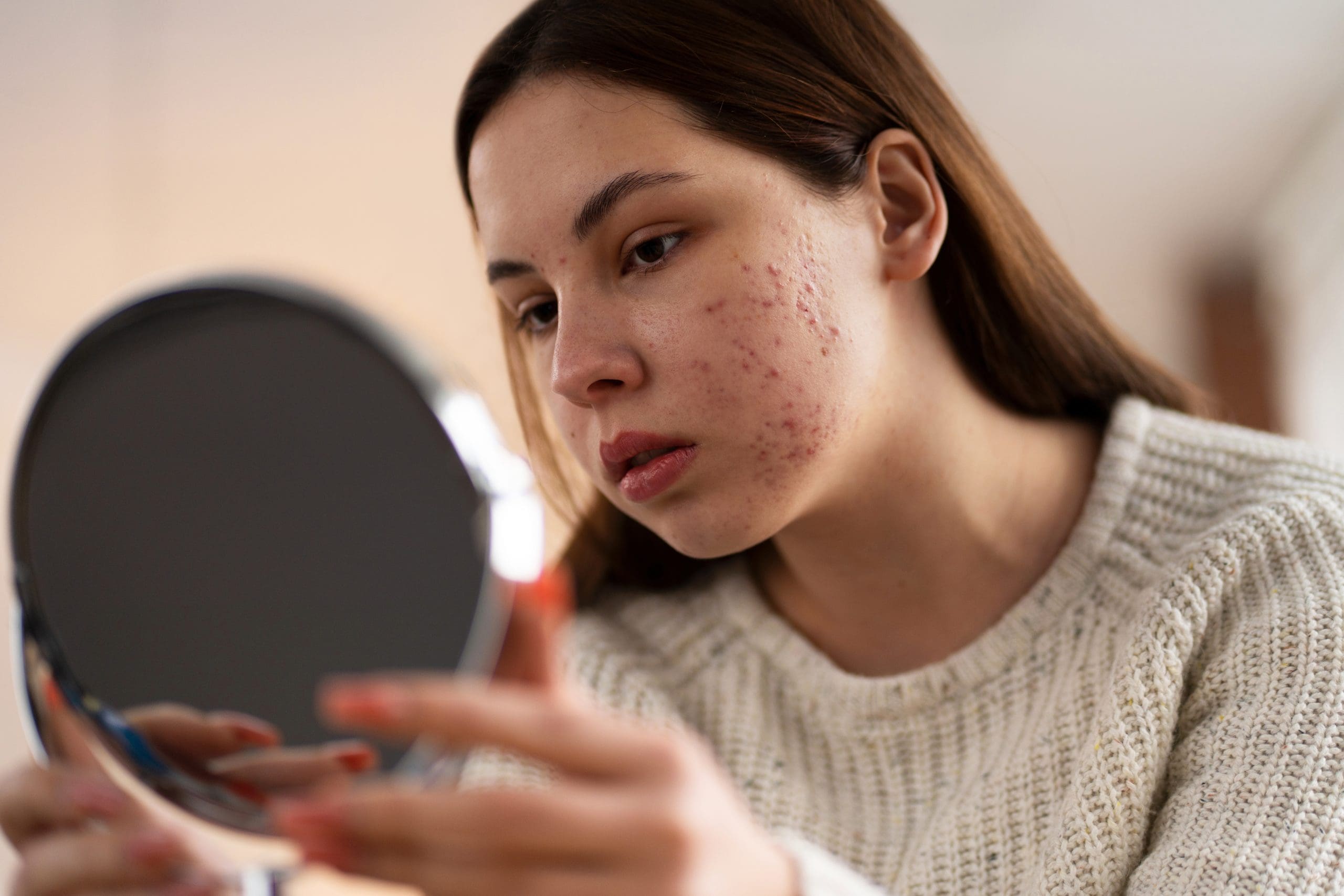Redness in the skin is a common concern that many individuals face. Whether it’s caused by skin conditions like rosacea or eczema, sensitivity, or even environmental factors, dealing with redness can be a frustrating and challenging task. However, with the right skincare routine and practices, you can manage and reduce redness effectively.
How redness can occur?
1. Skin Conditions: Skin conditions like rosacea, eczema, and psoriasis can lead to redness and inflammation. If you suspect you have one of these conditions, consult a dermatologist for proper diagnosis and treatment.
2. Sensitivity: Some individuals have naturally sensitive skin that reacts to various triggers, including certain skincare products, environmental factors, or even stress.
3. Allergies: Allergic reactions to skincare products or allergens in your environment can cause redness and irritation.
4. Environmental Factors: Exposure to harsh weather conditions, pollution, or UV radiation can cause skin redness and damage.
5. Inadequate Skincare: Using abrasive or harsh products, over-exfoliating, or not following a proper skincare routine can lead to skin irritation and redness.
Skincare Tips to Combat Redness
1. Gentle Cleansing: Start with a gentle, hydrating cleanser. Avoid products with harsh surfactants or fragrances, as they can strip your skin of its natural moisture and exacerbate redness.
2. Moisturize: Use a soothing, fragrance-free moisturizer to keep your skin hydrated. Look for ingredients like hyaluronic acid, ceramides, and glycerin to help repair your skin’s natural barrier.
3. Sun Protection: Apply a broad-spectrum SPF 30 or higher sunscreen daily to protect your skin from harmful UV rays, which can worsen redness and inflammation.
4. Avoid Harsh Ingredients: Steer clear of products with alcohol, retinoids, and strong acids, as they can irritate the skin. Opt for products formulated for sensitive or redness-prone skin.
5. Anti-Inflammatory Ingredients: Look for skincare products containing ingredients like niacinamide, aloe vera, chamomile, and colloidal oatmeal, which have anti-inflammatory properties and can help reduce redness.
6. Patch Testing: Before using new skincare products, always perform a patch test to ensure they don’t trigger allergic reactions or exacerbate redness
7. Cool Compresses: If your skin is feeling particularly red or inflamed, applying a cool compress for a few minutes can provide relief and reduce redness.
8. Diet and Hydration: Maintain a balanced diet and stay well-hydrated. Foods rich in antioxidants, such as fruits and vegetables, can help improve your skin’s overall health.
9. Stress Management: Practice stress-reduction techniques like meditation and yoga, as stress can trigger skin reactions and worsen redness.
10. Consult a Dermatologist: If you have a persistent redness issue that doesn’t improve with over-the-counter products, seek the guidance of a dermatologist. They can recommend specific treatments and prescriptions to address your concerns.
Redness in the skin is a common issue, but it doesn’t have to be a lifelong struggle. By understanding the causes of redness and adopting a gentle skincare routine tailored to your specific needs, you can effectively reduce and manage redness. Remember to be patient and consistent with your skincare efforts, and consult a dermatologist when necessary. With the right approach, you can achieve a clearer and more even complexion, boosting your confidence and comfort in your own skin.
